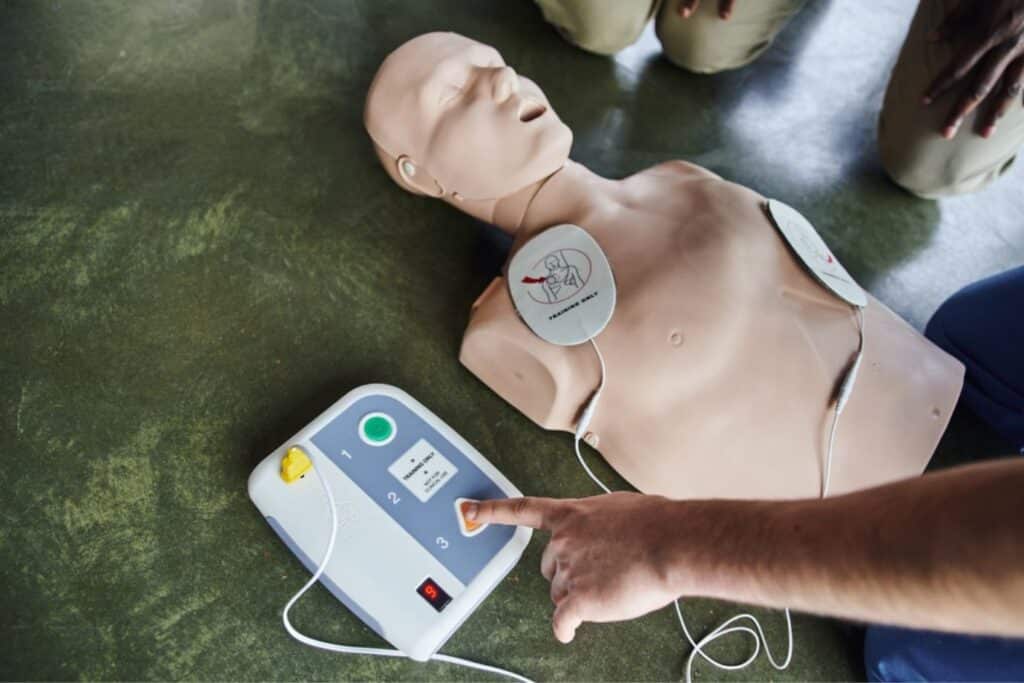Only five per cent of women who had an out-of-hospital cardiac arrest in 2020-2021 received defibrillation from a bystander, compared with 10 per cent of men.
Researchers at the Baker Heart and Diabetes Institute and Ambulance Victoria said these findings might be due to bystanders feeling uncomfortable about undressing and exposing the breasts of women who are suffering from a cardiac arrest and require defibrillation.
Dr Liz Paratz from the Baker Institute said defibrillation can save a person’s life, and these statistics suggest men could have higher survival rates of cardiac arrest, due to the higher likelihood of receiving defibrillation.
“It shows that strategies to promote bystander defibrillation in women experiencing a cardiac arrest in the community with a shockable rhythm should be a priority,” Dr Paratz said.
“Multiple studies across Japan, the Netherlands and the United States have reported that female out-of-hospital cardiac arrest patients are less likely to have automatic external defibrillator (AED) pads applied to even ascertain cardiac rhythm in the first instance.
“We know there may be some reasons why bystanders may not perform defibrillation on women but it is critical that we address these issues as they could mean the difference between life and death.”
When someone is in #cardiacarrest, take Liz's advice & "get in there". Know how to use a #defibrillator & don't be afraid to use it on men & women.@AmbulanceVic @StVincentsMelb @AAMRI_Aus @Alfred_Research @AlfredHealth @thecsanz @OzCvA @MaryAnneThomas https://t.co/t2D2SYqwHI
— Baker Institute (@BakerResearchAu) January 11, 2024
Dr Paratz said to curtail these statistics, first aid training causes should be more inclusive. She suggested more women volunteers at CPR training, as well as mannequins with visible female anatomy, will help make first aid respondents more proactive and comfortable in treating women who suffer from an out-of-hospital cardiac arrest.
As the lead researcher and cardiologist at the Baker Institute, Dr Paratz said defibrillation gives people the “best shot at surviving” a cardiac arrest, and first aid respondents should be confident in providing this treatment no matter what body the sufferer has.
“When it comes to defibrillation, people should keep in mind that in many cases, it is simply a matter of turning on the power and the Automated External Defibrillator (AED) will coach you through the rest of the steps with visual and/or audio prompts,” Dr Paratz said.
“If a person’s heart is beating normally, they don’t need a shock. The AED will check this. It won’t give the person an electric shock unless it’s necessary. So, you can’t harm someone by using an AED.
“And if someone’s heart has stopped, please don’t be put off by embarrassment from getting defibrillator pads on their chest – it’s their best shot at surviving.”
Out-of-hospital cardiac arrests kill almost four million people globally every year, according to the Baker Institute. In Victoria, around 20 people suffer a cardiac arrest every day, and only one in ten survive.
Dr Ziad Nehme, an Ambulance Victoria Paramedic and the Director of Research and Evaluation, said bystander defibrillation is potentially a life-saving step in treating someone who is suffering from a cardiac arrest.
“The initiatives that we’ve used to enhance rates of community CPR over the last two decades have clearly been effective, but we now need to intensify our focus on bystander defibrillation,” he said.
Dr Nehme suggested people download the GoodSAM app. It is an app where members of the community can send out an alert to people who are trained in CPR.
“GoodSAM is a life-saving smartphone app that connects Victorians in cardiac arrest with members of the community who are willing to start CPR and apply an AED in the critical minutes before paramedics arrive,” he said.


